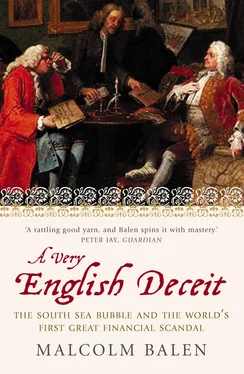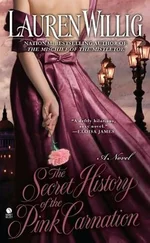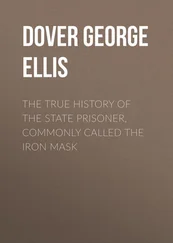For all his splendid dreams, however, it was as hard for Wren to raise money for his great project as it was to quarry the blocks of stone for the cathedral’s construction. The Act of 1670 which allotted St Paul’s four and a half pennies in tax for every chaldron, or twenty-five hundred-weight of coal, brought it only some £4,000 a year, and in 1677 the cathedral’s commissioners were forced to mount an appeal to the nation. Even the monarch was enlisted to the cause. Sermons were preached around the country, collections taken, and gradually the ordinary people sent in their pennies and their pounds to the rebuilding fund. Still, the greatest building the country had seen was in danger of being left uncompleted – until the workmen themselves came up with the solution: they suggested that their wages should be considered as a loan to the building project, and they would work instead for the interest on the money they were due. By the end of 1697, more than £24,000 was owed to them, including £1,500 to the master carver Grinling Gibbons. The cathedral slowly rose.
Thirty years after he first started, Wren’s task is nearly done. Above the Derbyshire lead and Kentish timber of his dome, a ball and lantern top out his mighty work, three hundred and fifty-five feet above the streets. His is the largest, most beautiful cathedral in England, a fitting homage to the patron saint of the City of London whose wealth has helped make the country one of the grandest on the globe. Out of a total of three-quarters of a million pounds, it has cost Sir Christopher Wren £2,000 of his own money, a small fortune for the times.
Soon, however, such a sum will appear to be a trifle. The financial world is about to be turned upside-down in the streets below.
Ten years after Wren completed his cathedral, to mark his vision of eternity, a city which had survived plague and fire to prosper as a mercantile centre – a city which, to the untrained eye, had risen gloriously from its ashes – was beginning to live only for the moment, chasing financial liberation by buying shares in extraordinary new projects that had no foundation. The Age of Reason, which held that science could explain all, was giving way, indeed was being unceremoniously elbowed aside, by the Age of Insanity. The country was rushing headlong into enterprises founded on little more than an understanding of human greed and corruptibility. By speculating on the stock market, a humble bookseller trading near the cathedral churchyard would win a third of the total cost of building St Paul’s.
An age inspired by the genuine achievement of men like Christopher Wren and Isaac Newton had the misfortune to collide at full speed with the age of the moneyed-men. Hundreds of projects were launched in these vertiginous times. Here was invention, inspiration and downright fraud, all merging in a pot-pourri of frenzied activity. Schemes arose thick and fast with just enough scientific credibility to fool the layman. ‘Projectors’ – as such speculators were known – were held to want money
For a wheel for perpetual motion
For extracting silver from lead
For carrying on a trade in the river Oronooko
For trading in hair
For paving the streets of London
For furnishing funerals to any part of Great Britain
For insuring and increasing children’s fortunes
The country appeared to have discovered a new industry with new rules of credit which held out the prospect of immense riches, removing traditional class barriers to wealth. It was an exciting, vibrant era in which huge fortunes could be created overnight by a simple share launch.
One of the most famous projects was launched by James Puckle, who designed a flintlock machine-gun for making a ‘total revolution in the art of war’. The Puckle gun was mounted on a tripod and fired nine shots a minute, one after the other and three times faster than a soldier’s musket. Puckle had two versions of his design. One weapon, intended for use against Christian enemies, fired conventional round bullets. The second, designed to be used against the Muslim Turks, fired square bullets, which were believed to cause more painful wounds.
But some of the schemes were not half as sensible as this. There was even said to be a ‘Company for carrying on an undertaking of Great Advantage but no-one to know what it is’. Crowds of investors were reported to have surrounded the company’s office in Cornhill, snapping up shares at £2 each. Some of the schemes were swindles, others were hoaxes – not with a view to making money but simply to illustrate the country’s madness. Spread by greed and by the newspapers’ zeal in reporting daily on the changing prices of shares, the new way to make money without having to do an honest day’s toil appeared to be obsessing the whole country.
Speculators scrambled to invest in the thousands of new projects, launched in the wake of the grandest scheme of them all, a scheme which would grow to such a size it seemed as if there was not enough money in the kingdom to support it. Some would make or lose up to a quarter of a million pounds in the madness of 1720, when shares in some ventures rose as high as the cathedral itself. Few investors kept their feet firmly on the ground; many felt under pressure to join in as they watched their neighbours climbing a new social ladder through the sudden acquisition of riches. Politicians, the clergy, landowners and the poor all joined in the scramble. Social mobility appeared to race out of control, with barriers between the classes seemingly removed by the chance of easy money. Women, defying convention, invested too – to claim, albeit briefly, an equal place in society. A there porter in Exchange Alley was said to have made £2,000 – ten times the annual income of an entire well-to-do family and a hundred times his own likely yearly earnings. Investors flocked to Britain from Holland and France. The canton of Bern in Switzerland made a corporate decision to invest. The streets of Exchange Alley heaved with desperate souls seeking to place their money in the mushrooming schemes. Fortunes, it appeared, could be made overnight.
The story of the events of 1720 holds more than just the elements of greed and pathos. It was, to those on the edges of the affair, so ridiculous that it inspired a generation of satirists to make fun of the human condition. And it was cruel, causing suffering among many families across the land. Ultimately, it showed England at its most corrupt, exposing the poisonous underbelly of the monarchy, of the ruling classes and of the elected politicians.
The three actors in the drama would be John Blunt, the aspiring son of a Kent shoemaker; John Law, a Scottish gambler; and Robert Walpole, a scheming Whig politician from Norfolk with an ambition as large as his girth. Blunt and Law would, in very different ways, lead the search for the alchemy that would overturn the vast debts of two nations and fill ordinary people’s pockets to overflowing. From 1710 to 1720 their careers would collide, and the impact would change the political and economic direction of two great countries, England and France. One was a shallow schemer, who conned a nation; the other a brilliant economist, far ahead of his times, whose intellectual theories blinded him to reality; but both would be condemned as charlatans when their inventions failed. On the backs of their triumphs and disasters, Walpole would, through cunning and ability, rise to unparalleled political power.
When reality returned, as inevitably it would, the old industries of shipping, farming and land-ownership, too dull for the exciting times of the stock-market ride, would once more be seen to be the places to put hard cash. The same would be true of the trade of which Wren was the architectural master: bricks and mortar would come back into favour. Those who had transferred their allegiance to the share market would be left to bemoan their fate and mourn their thumping losses. The Duke of Portland quietly applied for, and was granted, the governorship of Jamaica. A more ignominious position for a member of the eighteenth-century aristocracy can scarcely be imagined. But he needed to draw a salary.
Читать дальше












